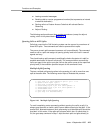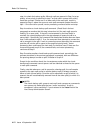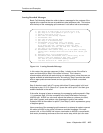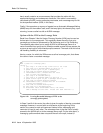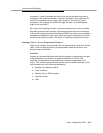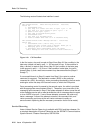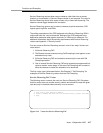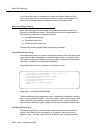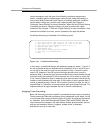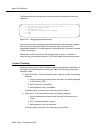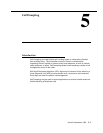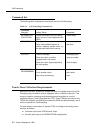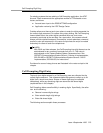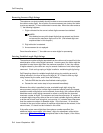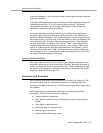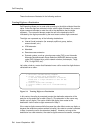
Functions and Examples
Issue 4 September 1995
4-19
vector
commands, each with one of the following conditions assigned and
tested:
available-agents, staffed-agents, calls-queued
,
oldest call-waiting
, or
time-of-day
. When Advanced Vector Routing is enabled, additional conditions
can be tested:
rolling-asa
,
counted-calls
,
expected-wait
. See Chapter 6,
"Advanced Vector Routing" for more information. When ANI and II-Digits Routing
is enabled, the
ani
and
ii-digits
conditions can also be tested with a
goto
command. See, Chapter 7, "ANI and II-Digits Routing" for more information. If the
command’s condition is not met, control is passed to the step that follows.
Conditional branching is illustrated in the following vector.
Figure 4-16. Conditional Branching
In this vector, a conditional branch test statement appears in steps 1, 2 and 3. If
the call is placed during non-business hours (between 5:00 p.m. and 8:00 a.m.)
on any day of the week, the
goto vector
command in Step 1 routes the call to
vector 100. However, if the call is placed during business hours, control is
passed to Step 2, where the
goto vector
command there checks whether the call
is placed during the weekend. If this is the case, the call is routed to vector 200.
If not, control is passed to Step 3, where the
goto step
command checks for the
number of calls queued to the main split. If the number of calls is greater than 5,
control is passed to
busy
in Step 8. If the number of calls is 5 or less, the call is
queued (Step 4). Thereafter, an announcement-wait cycle (Steps 5 through 7) is
implemented until an agent answers the call or the call is abandoned.
Stopping Vector Processing
Basic Call Vectoring provides a specific command that stops vector processing.
The
stop
command halts the processing of any subsequent vector steps. If a call
is not queued when vector processing stops, the call is dropped and tracked as
an “abandon” by the Call Management System (CMS) and/or BCMS. After the
stop
command is processed, any calls that are already queued remain queued,
and any wait treatment (silence, ringback, system music, or alternate
audio/music source) is continued.
1. goto vector 100 if time-of-day is all 17:00 to all 8:00
2. goto vector 200 if time-of-day is fri 17:00 to mon 8:00
3. goto step 8 if calls-queued in split 1 pri l > 5
4. queue-to main split 1 pri l
5. announcement 4000
6. wait-time 60 seconds hearing ringback
7. goto step 5 if unconditionally
8. busy



